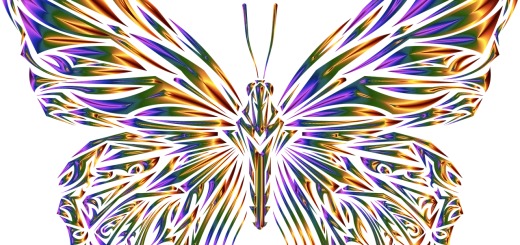The Chimera: A Beast from Greek Mythology

Looking for more amazing products? Check out our online store and explore our collection here! Happy shopping!
Before diving in, please note: This post is for informational purposes only. If you’d like to know more about how we approach topics, feel free to check out our friendly Disclaimer Page.
Hey there, amazing readers! 
We’re committed to delivering quality posts, and your support (even just sticking around despite the ads) means everything to us. So, bear with us, and thanks for helping us keep the good vibes rolling. Now, on to the fun stuff!
TRANSLATE BUTTON AT THE END OF THE ARTICLE
A Quick Overview
The Chimera is one of the most fascinating creatures in Greek mythology.
Picture this: a monster that’s part lion, part goat, and part serpent, breathing fire and embodying chaos itself.
It’s a creature that captures the imagination, representing not just fear but also the unpredictable nature of life.
In this article, we’ll dive deep into the lore surrounding the Chimera, exploring its origins, significance, and the various ways it has influenced culture and art throughout the ages.
So, grab your favorite beverage, and let’s embark on this mythical journey together!
Unveiling the Chimera: A Marvelous Mythical Creature
The Chimera stands out among the pantheon of mythological beings.
This beast isn’t just a figure of nightmares; it embodies a mixture of different animals, each contributing to its terrifying persona.
According to myth, it had the body and head of a lion, a goat protruding from its back, and a tail that ended in a serpent’s head.
Imagine walking through the woods and suddenly encountering this creature.
Its lion’s roar would send shivers down your spine while the goat’s bleat would leave you perplexed.
And let’s not forget the fiery breath!
The Chimera wasn’t just a creature; it was a force of nature, a reminder of the chaos and unpredictability that life can present.
I often think about how the Chimera serves as a metaphor for the struggles we face.
Just like the creature, our challenges can seem like a chaotic mix of different fears and obstacles.
But, just as heroes in these myths battled the Chimera, we too can confront our own challenges head-on.
The Origins of the Chimera in Ancient Greek Lore
The tale of the Chimera traces back to ancient Greek texts, particularly the works of Homer and Hesiod.
Homer refers to the creature in "The Iliad," where it’s described as a fire-breathing monster terrorizing the land of Lycia.
Hesiod, in his "Theogony," elaborates on its lineage, stating that it was the offspring of Typhon and Echidna, both formidable monsters in their own right.
The Chimera was not born out of mere fantasy; its creation reflects the ancient Greeks’ attempts to rationalize the chaotic elements of nature.
In their eyes, the Chimera represented natural disasters, beasts, and the uncontrollable forces of the world.
As I delve into these ancient texts, I find the stories resonate with our modern experiences.
We often feel like we are battling our own Chimeras—be they fears, responsibilities, or societal expectations.
The myth serves as a reminder that even the fiercest challenges can be faced and overcome with bravery and cunning.
A Look at the Physical Features of the Chimera
The Chimera’s physical description is as wild as its legend.
Picture a creature standing as tall as a horse, with a lion’s head roaring at the front.
Its body—powerful and muscular—exudes strength, while the goat’s head, emerging from its back, gives it an odd yet fascinating charm.
The tail, ending in a serpent’s head, adds an element of surprise and danger.
Lion’s Head: Symbolizes strength and dominance.
It instills fear and respect.
Goat’s Head: Represents stubbornness and unpredictability.
Goats can be mischievous!
Serpent’s Tail: A reminder of treachery and stealth.
Serpents often carry a sinister reputation.
This odd combination emphasizes the chaotic nature of the Chimera.
Each part of its body contributes to its fearsome identity.
It mirrors the complexities we often face—different aspects of life colliding, sometimes harmoniously, other times with utter chaos.
The Chimera’s Role in Greek Mythology and Stories
In Greek mythology, the Chimera plays a crucial role as an antagonist.
Its primary purpose?
To challenge heroes and test their mettle.
This creature was said to have terrorized the region of Lycia, wreaking havoc and destruction.
Its fire-breathing capabilities made it a formidable opponent, one that few dared to confront.
The Chimera is often depicted as a guardian of treasure, representing not only physical wealth but also the deeper treasures of bravery and wisdom.
The legends surrounding the creature often served as cautionary tales, warning people about the dangers of arrogance and the importance of strategy over brute strength.
Whenever I read about the Chimera, I think of the challenges we face in our lives.
Just like the heroes in these tales, we each encounter our Chimeras, testing our limits and courage.
It’s a reminder that facing our fears often leads to personal growth and discovery.
Famous Heroes Who Battled the Fearsome Chimera
The most notable hero to face the Chimera was Bellerophon, a young warrior destined for greatness.
With the help of the winged horse Pegasus, he soared into battle against the beast.
Bellerophon’s story serves as an inspiring tale of courage and ingenuity.
He didn’t simply charge forward; he devised a plan, using the height advantage of Pegasus to attack the Chimera from above.
Other heroes were drawn into the tale, either as bystanders or as part of the broader narrative.
The Chimera’s fierce reputation became a rite of passage for many warriors, a test that proved their worthiness in the eyes of the gods.
I can’t help but admire Bellerophon’s cleverness.
It’s a classic David vs.
Goliath scenario—using wit and intelligence to conquer an intimidating foe.
This resonates with us in our day-to-day lives.
Sometimes, it’s not about being the strongest; it’s about being resourceful and strategic.
Symbolism of the Chimera: What Does It Represent?
The Chimera embodies a multitude of themes and meanings within Greek mythology.
It symbolizes chaos and unpredictability, much like the challenges we face in our lives.
Just as the Chimera was a blend of various animals, our fears and obstacles often intermingle, creating a sense of confusion and turmoil.
Moreover, the Chimera can represent the duality of human nature—the constant battle between our desires and moral dilemmas.
Its fire-breathing essence evokes the idea of passion and destruction, a reminder that unchecked emotions can lead to chaos.
In my own life, I often see the Chimera’s symbolism reflected in personal challenges.
Sometimes, I feel like I’m battling a mix of fears and aspirations—each vying for my attention.
The myth serves as a profound reminder of the importance of balance, courage, and wisdom in overcoming the chaos of life.
The Chimera in Modern Culture: Movies and Literature
The Chimera has transcended ancient Greek mythology and finds itself alive in modern culture.
It has been featured in various movies, books, and video games, showcasing its enduring appeal.
Movies: Films like "Clash of the Titans" showcase the Chimera as a formidable monster, bringing the myth to life with stunning visuals and dramatic battles.
Literature: Authors often draw inspiration from the Chimera, using it as a metaphor for internal struggles or as a challenge for their characters to overcome.
Video Games: The Chimera appears in numerous video games, often as a boss battle that tests players’ skills and strategies.
This creature’s presence in contemporary storytelling speaks volumes about its universal themes.
It continues to captivate audiences, reminding us of the timeless battles we face against our fears and challenges.
Artistic Interpretations of the Chimera Through Ages
The Chimera has inspired countless artists across the centuries.
From ancient pottery to Renaissance paintings, its fearsome image has been reinterpreted in diverse styles.
Ancient Pottery: Depictions often highlight the Chimera’s unique features, showcasing its blended anatomy.
Renaissance Art: Artists like Rubens portrayed the Chimera in dramatic scenes, emphasizing its ferocity and the hero’s bravery.
Modern Art: Contemporary artists sometimes use the Chimera as a symbol of societal chaos, reflecting modern anxieties and challenges.
Each artistic interpretation adds layers of meaning to the Chimera’s myth.
I find it fascinating how one creature can evoke such a wide array of emotions and interpretations.
It mirrors our own struggles—how we perceive and represent our fears and challenges differs from person to person.
How the Chimera Compares to Other Mythical Beasts
When compared to other mythical creatures, the Chimera stands out due to its hybrid nature.
Unlike singular beings like the Minotaur or Cerberus, the Chimera fuses different elements—creating a beast that embodies chaos.
Minotaur: Represents the labyrinth of our minds—complex and often confusing.
Cerberus: Acts as a guardian of the underworld, symbolizing the barriers we face in life.
Hydra: A multi-headed serpent that regenerates, signifying overwhelming challenges that seem endless.
What sets the Chimera apart is its unpredictable nature.
While other mythical beasts may have distinct roles or meanings, the Chimera’s chaotic essence reflects the multifaceted challenges we encounter daily.
It’s as if it serves as a cautionary tale—reminding us that life is unpredictable and complex.
The Evolution of the Chimera’s Myth Over Time
The myth of the Chimera has evolved significantly since its inception.
In ancient times, it was primarily a symbol of destruction and chaos.
As stories were passed down through generations, interpretations shifted, giving the Chimera layers of meaning.
In the Renaissance, the Chimera often represented the conflict between humans and nature.
Artists depicted it in ways that highlighted humanity’s struggle against uncontrollable forces.
Today, the Chimera is sometimes seen as a representation of internal conflict.
As we grapple with our fears, desires, and challenges, the Chimera serves as a metaphor for the chaotic mix of emotions we experience.
This evolution speaks to the enduring relevance of the myth in our lives.
Fun Facts About the Chimera You Might Not Know
The Chimera is often confused with the term "chimeric," which refers to something composed of incongruous parts, much like the creature itself.
The Chimera’s lineage is impressive, being the offspring of Typhon, a giant serpent, and Echidna, a half-woman, half-snake creature.
In some interpretations, the Chimera was considered a female monster, which adds a layer of intrigue to its character.
The word "Chimera" is used in modern science to describe organisms with genetically distinct cells, showcasing how the myth has influenced contemporary language.
Learning these tidbits adds an extra dimension to the Chimera’s legacy.
It’s fascinating to see how a creature from ancient myths continues to be relevant today, influencing both language and culture.
Why the Chimera Continues to Fascinate Us Today
The Chimera remains a source of fascination for many.
Its unique blend of animal traits and the chaos it represents resonate with our modern experiences.
We live in a world filled with unpredictability, making the Chimera’s legacy timeless.
As I reflect on my own life, I realize that I often face my Chimeras—whether it’s career challenges, personal fears, or societal pressures.
The myth serves as a reminder that we are not alone in our struggles.
Just like the heroes who battled the Chimera, we too have the strength to confront our fears and emerge victorious.
In popular culture, the Chimera serves as a powerful symbol—one that invites us to explore the complexities of human emotions and the innate chaos of existence.
It’s a reminder that, while the challenges may seem daunting, they can be faced head-on with courage and cleverness.
Conclusion
The Chimera, with its rich history and multifaceted symbolism, continues to captivate our imaginations.
From ancient tales to modern interpretations, this beast serves as a powerful metaphor for the complexities of life.
Whether we see it as a symbol of chaos or a challenge to be faced, the Chimera reminds us that courage and ingenuity can triumph over fear.
So, the next time you encounter a challenge that feels like a Chimera, remember—you have the power to conquer it!

The Enlightenment Journey is a remarkable collection of writings authored by a distinguished group of experts in the fields of spirituality, new age, and esoteric knowledge.
This anthology features a diverse assembly of well-experienced authors who bring their profound insights and credible perspectives to the forefront.
Each contributor possesses a wealth of knowledge and wisdom, making them authorities in their respective domains.
Together, they offer readers a transformative journey into the realms of spiritual growth, self-discovery, and esoteric enlightenment.
The Enlightenment Journey is a testament to the collective expertise of these luminaries, providing readers with a rich tapestry of ideas and information to illuminate their spiritual path.
Our Diverse Expertise
While our primary focus is on spirituality and esotericism, we are equally passionate about exploring a wide range of other topics and niches 

To ensure we provide the most accurate and valuable insights, we collaborate with trusted experts in their respective domains 
Our blog originally focused on spirituality and metaphysics, but we’ve since expanded to cover a wide range of niches. Don’t worry—we continue to publish a lot of articles on spirituality! Frequently visit our blog to explore our diverse content and stay tuned for more insightful reads.
Hey there, amazing reader! 
Check out our store here and take a peek at some of our featured products below! Thanks for being awesome!













